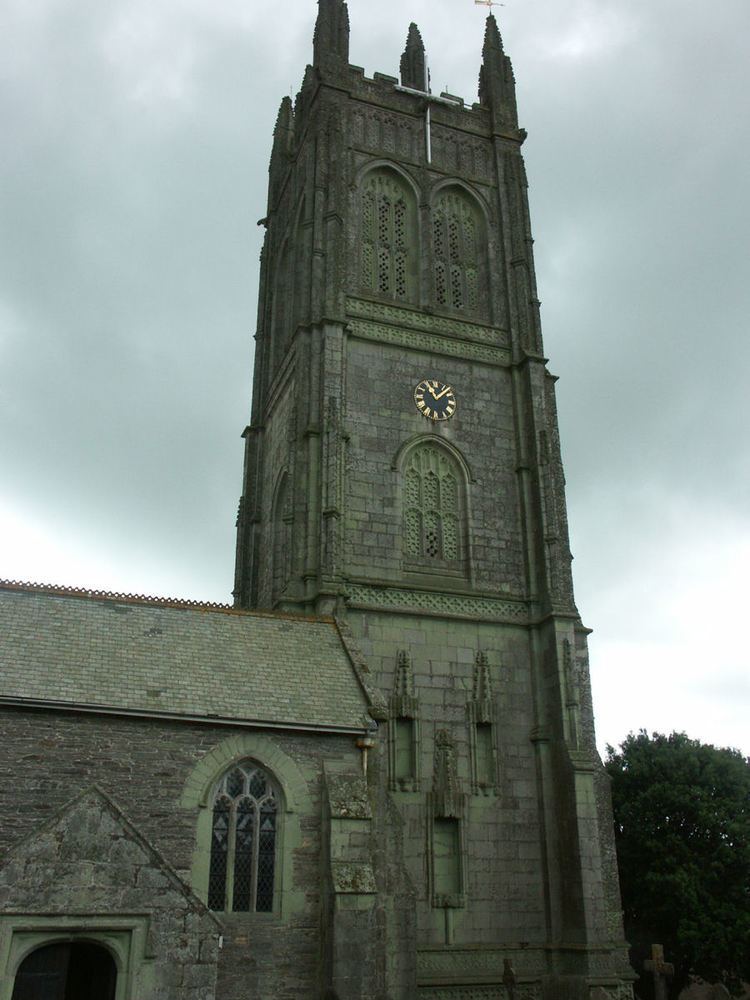Local time Monday 4:25 PM | ||
 | ||
Weather 13°C, Wind E at 29 km/h, 70% Humidity | ||
Golden chapel nr probus cornwall
Probus (Cornish: Lamprobus) is a civil parish and village in Cornwall, England, in the United Kingdom. It is famous for having the tallest church tower in Cornwall. The tower is 129 feet (39 m) high, and richly decorated with carvings. The place name originates from the church's dedication to Saint Probus. The parish population at the 2011 census was 2,299, whereas the ward population taken at the same census was 3,953.
Contents
- Golden chapel nr probus cornwall
- Map of Probus UK
- History
- Geography and wildlife
- Transport
- Culture
- Sports and recreation
- Notable residents
- References
Map of Probus, UK
History
There was a monastery here before the Norman Conquest which continued to exist until the reign of Henry I. King Henry gave the church of Probus to Exeter Cathedral and the clergy of Probus thereafter were a dean and five canons (the deanery was abolished in 1268 and the canonries in 1549). The first vicar was instituted in 1312; the parish had dependent chapelries at Cornelly and Merther. The church was built mainly in the 15th century but the tower was still under construction in 1523. In the church is the brass of John Wulvedon and his wife, 1512. In the early years of the 19th century the rare custom of turning to the East for the Doxology at the conclusion of the recitation of each Psalm, particularly by those in choir, was observed in Probus church.
There are records of no less than nine medieval chapels in the parish and three more of which traditions exist. Two mansions formerly existed at Golden: one of the Wolvedon family and a larger one of the Tregians. The line of Wolvedons became extinct in 1514. At the Tregian mansion the Catholic martyr Cuthbert Mayne was arrested in June 1577. The farmhouse at Golden contains the remains of a hall-house of the late 1530s, reconstructed about a century later, and extended in the 18th century. There is also a fine barn with original roof timbers and a first floor window. Trewithen House was built in 1723.
An annual market and fair was held here from 1321.
Geography and wildlife
Trehane Barton is the former home of the Stackhouse family and a Site of Special Scientific Interest. When the SSSI was notified in 1989 the barns supported the largest known breeding colony of Greater Horseshoe Bat in Cornwall and one of only eleven known colonies in Britain. No bats were present during a visit in October 2010 to access the site which was given an "unfavourable no change" condition.
Transport
Probus lies very close to the Cornish Main Line railway and was formerly served by the Probus and Ladock halt. It is also situated off the A390 road. Probus is served by local bus services between Truro and St Austell, provided by First Group and formerly Western Greyhound (before the company became defunct in March 2015), and also by National Express providing links to further destinations.
Culture
The Hawkins Arms, a St Austell Brewery house, is an 18th-century pub located on Fore Street. The Comrades Club is a members' club situated on The Square.
The Probus Parish Players, formed in 1991, holds an annual pantomime in the Village Hall.
Probus has a Probus Club, the Probus Club of Probus.
Sports and recreation
Probus has a King George's Field, a memorial to King George V.
